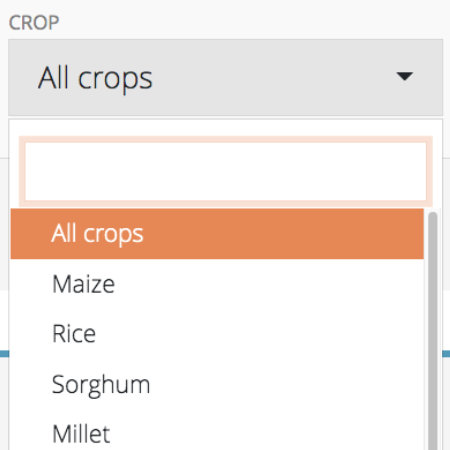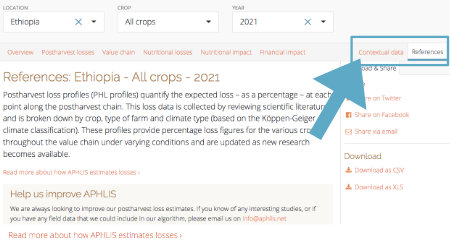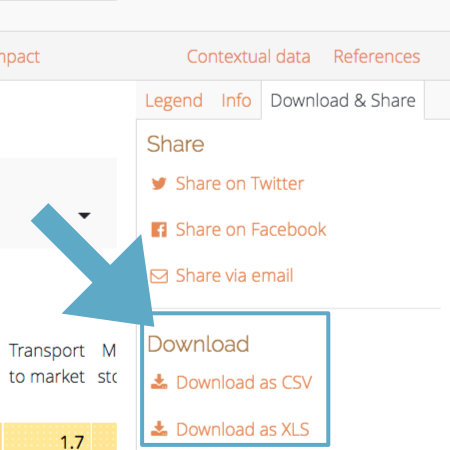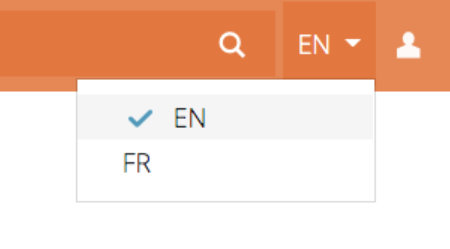Aide sur le site
Apprenez à utiliser APHLIS et découvrez comment accéder à tous les types de données disponibles en regardant cette vidéo. Regardez la vidéo dans son intégralité ou passez aux sections spécifiques à l'aide des boutons ci-dessous.
Merci de noter que la vidéo est sans son. Les petites vidéos permettent de passer directement à la section pertinente de la vidéo intégrale. Pour afficher la vidéo en mode plein écran, cliquez sur l'icône placée en bas à droite de chaque vidéo.
Prêts à essayer ? Testez-vous avec notre quiz !
Je voudrais ...
Changer la région ou le pays Changer l'année ou la culture Afficher les estimations en tonnes ou en USD Afficher le nombre d'individus dont le besoin nutritionnel annuel est perdu Apprendre comment les estimations ont été calculées Obtenir les références des données Trouver des informations détaillées pour chaque ongletVous avez une question qui ne figure pas sur la liste ?
Si vous avez des questions, des idées ou des commentaires, n'hésitez pas à nous contacter à l'adresse info@aphlis.net.
Afficher les estimations des pertes post-récolte pour une région ou un pays
- Cliquez sur le menu déroulant appelé 'Localisation' et choisissez une région, un pays ou un département.
- Si vous ne trouvez pas l'endroit que vous cherchez ou si vous voulez éviter trop de défilement, commencez à saisir le nom de l'endroit dans le champ de recherche.
- Pour afficher tous les endroits disponibles, cliquez l'icône × à côté de l'endroit actuellement sélectionné ou choisissez 'Tous les pays APHLIS' dans le menu déroulant.
- Vous pouvez également cliquer sur un nom d'endroit dans les tableaux.
Changer l'année ou afficher toutes les années disponibles
- Cliquez sur le menu déroulant des années et choisissez une autre année.
- Pour afficher toutes les années disponibles, cliquez l'icône × à côté de l'année ou sélectionnez 'Toutes les années' dans le menu déroulant.
- Vous pouvez également cliquer sur une année dans les tableaux.
- Naviguez à gauche et à droite dans les tableaux pour voir toutes les années disponibles.
- Voyez par exemple les estimations des pertes post-récolte de maïs pour tous les pays et toutes les années ›
Changer la culture

- Comme dans le chapitre expliquant comment changer l'année, vous pouvez sélectionner une culture spécifique dans le menu déroulant des cultures en haut de l'écran.
- Sélectionnez une culture en cliquant sur la liste et ensuite sur la culture en question.
Explorer tous les onglets de données
- En fonction de la sélection du pays, de la culture et de l'année, différents onglets sont disponibles.
- Si aucune donnée n'est disponible pour un onglet, essayez une sélection plus précise comprenant une culture, un pays et une année.
- Certaines combinaisons de pays et de cultures ne sont pas disponibles, dû au fait que certaines cultures ne sont cultivées que dans certains pays, ou alors que les données de certaines cultures ne sont simplement pas disponibles dans certains pays.
- Il est également possible qu'il n'y ait pas de données pour certaines années. Par exemple les données de PIB ne sont probablement pas encore disponibles pour les dernières années. Ou alors les données de prix manquent pour certaines années. Dans un tel cas, la sélection d'une autre année pourrait vous aider.
Afficher les estimations des pertes post-récolte en pourcentage, en tonnes ou en USD
- En dessous des onglets se trouve le menu déroulant des mesures de pertes.
- Utilisez-le pour voir quelles mesures sont disponibles pour ce que vous avez actuellement sélectionné.
- Voir par exemple les Estimations des pertes post-récolte 2020 pour tous les pays et toutes les cultures, exprimées en USD ›
Afficher les estimations des pertes post-récolte comme nombre d'individus dont le besoin nutritionnel annuel équivalent est perdu
- Pour afficher les estimations des pertes post-récolte exprimées en nombre d'individus dont le besoin nutritionnel annuel équivalent est perdu, assurez-vous d'avoir sélectionné au moins un endroit ou une culture et cliquez l'onglet 'Pertes nutritionnelles'.
- À côté du menu déroulant des mesures se trouve le menu déroulant 'Type de données'.
- Par défaut, le type de données 'Nutriment perdus' est sélectionné; choisissez 'Nombre d'individus dont le besoin nutritionnel annuel est perdu' d'un des trois groupes focaux disponibles.
- Voir un exemple de Nombre d'individus dont le besoin nutritionnel annuel est perdu (nombre d'individus de moyenne pondérée nationale) pour l'estimation des pertes de maïs dans tous les pays et toutes les années ›.
Découvrez l'impact financier des pertes post-récolte
- Assurez-vous d'avoir sélectionné au moins une combinaison de culture et d'année, de pays et de culture, ou de pays et d'année.
- Cliquez l'onglet 'Impact financier'.
- Vous voyez alors la valeur en USD des estimations de pertes post-récolte et le pourcentage du PIB et du PIB agricole auxquels cette valeur correspond.
- Voir un exemple de l'impact financier des pertes de maïs estimées en 2019 dans tous les pays APHLIS ›
Afficher l'impact nutritionnel des pertes post-récolte
- Après avoir sélectionné un pays, une culture et une année, ouvrez l'onglet Impact nutritionnel.
- La table de composition nutritionnelle des aliments est présélectionnée en fonction du pays choisi, vous pouvez en sélectionner une autre si nécessaire.
- Vous voyez maintenant l'impact nutritionnel des pertes post-récolte sur les différents groupes focaux de la population.
- Par exemple, comparez l'impact nutritionnel des pertes post-récolte de maïs 2021 en Éthiopie sur le groupe des femmes enceintes âgées de 19 à 30 ans par rapport à la population générale.›
Explorez les différents types de contenu disponibles pour chaque onglet en fonction des filtres de données sélectionnés
- Plus votre sélection est précise, plus les estimations seront détaillées.
- Si par exemple vous avez sélectionné un pays et une année, vous verrez l'information sur les provinces ou départements du pays.
- Si vous avez sélectionné une culture, vous obtenez des informations sur les différentes saisons de récolte de cette culture.
- Vous pouvez aussi aller sur l'onglet Aperçu pour afficher l'aperçu de toutes les informations disponibles pour votre sélection de données.
Voir comment se calculent les estimations
- Si vous avez sélectionné au moins le pays, vous pouvez cliquer sur les chiffres dans le tableau de données pour obtenir l'information quelles données étaient ou n'étaient pas disponibles pour le calcul des estimations de pertes post-récolte.
- Lorsque vous cliquez sur une cellule du tableau, une fenêtre s'ouvre pour afficher les études de référence qui ont été utilisées pour générer l'estimation.
- Si vous vous trouvez au niveau infra-national, la fenêtre affichera quelles données contextuelles étaient disponibles pour l'estimation et dans quelle mesure les études de référence correspondaient à la région sélectionnée.
- Vous pouvez aussi aller à l'onglet Données contextuelles pour un aperçu plus détaillé indiquant si les données de base ont été collectées ou approximées.
Obtenir les références des estimations de pertes post-récolte APHLIS

- Les profils de pertes pour chaque culture, étape de la chaîne de valeur et type de climat s'appuient sur des mesures de pertes mentionnées dans la littérature scientifique.
- Pour voir la liste complète des études de référence utilisées, cliquez sur l'onglet Réferences à droite de l'écran.
- Les profils de pertes extraits des études scientifiques pour chaque culture sont contextualisés pour les adapter au contexte de chaque combinaison pays, culture, année.
- Pour afficher les données contextuelles utilisées dans le calcul des estimations de pertes, cliquez sur l'onglet Données contextuelles à droite de l'écran.
Trouver des informations plus détaillées sur les données de chaque onglet
- Pour chaque onglet, vous pouvez cliquer sur le panneau 'Info' à côté de la légende.
- C'est ici que vous trouverez une explication en détail des données affichées dans l'onglet actuel.
- Chaque onglet et tableau de données a un panneau Info individuel, il est donc recommandé de lire chaque panneau Info pour mieux comprendre les données et la méthodologie.
Télécharger les données de pertes post-récolte

- Vous pouvez télécharger chaque tableau que vous voyez sur les pages des tableaux de données.
- Allez d'abord sur l'onglet qui contient le tableau en question ; par exemple le tableau Chaîne de valeur : Èthiopie - Toutes les cultures - 2021 ›
- Sur le côté droit de la page, cliquez sur le panneau 'Télécharger & Partager'
- En dessous des options de partage, vous trouvez les liens permettant de télécharger le tableau actuellement affiché, au format CSV ou au format XLS.
- Chaque tableau de chaque onglet individuel peut être téléchargé séparément.
Changer la langue du site web

- Trouvez le sélecteur de langue du site web dans la barre de navigation en haut à droite et cliquez-le.
- Pour voir la version anglaise du site, cliquez 'EN'.
- Pour voir la version française du site, cliquez 'FR'.
- Si vous utilisez un appareil à écran plus petit, cliquez le symbole du menu latéral à droite pour révéler le menu de navigation ; le sélecteur de langue se trouve alors juste en dessous de la barre de recherche.